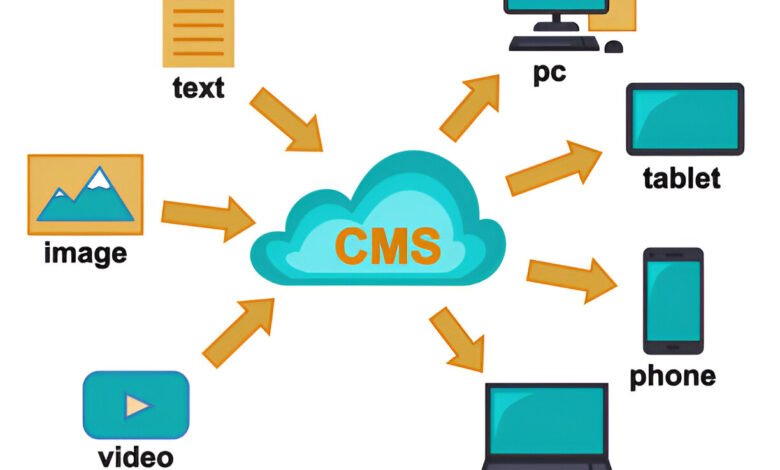How PaaS Solutions Accelerate Workflow Automation at Scale

Workflow automation has become a foundation for modern business efficiency. As companies handle more data and digital interactions, managing integrations between applications, services, and users becomes increasingly complex. Platform-as-a-Service (PaaS) solutions address this challenge by simplifying automation, scaling workflows, and ensuring performance consistency. They allow organizations to focus on innovation instead of infrastructure management, turning routine processes into seamless, intelligent systems.
Understanding PaaS and Its Role in Workflow Automation
PaaS platforms provide a managed environment for building, running, and automating applications without handling hardware or complex configurations. They offer prebuilt tools, APIs, and connectors that allow businesses to automate workflows faster and at a lower cost compared to traditional setups.
CRM Software Services often rely on PaaS infrastructure to enhance integrations between customer data systems, marketing tools, and analytics dashboards. This combination allows teams to synchronize data across departments and maintain efficiency at scale without manual intervention.
Simplifying Automation with a Managed Infrastructure
PaaS platforms remove the need for businesses to maintain servers, databases, and middleware. This enables faster deployment of automation logic across multiple systems. Developers can design, test, and deploy workflows in controlled environments while maintaining flexibility for updates or scaling.
Because infrastructure management is handled by the provider, teams can focus entirely on improving automation logic, optimizing resources, and aligning workflows with business goals.
Core Advantages of PaaS-Powered Workflow Automation
PaaS provides a consistent and scalable foundation for workflow automation across departments and cloud systems. It accelerates digital transformation and ensures operations can scale without interruptions.
1. Seamless Integration Across Systems
A key advantage of PaaS is its ability to connect multiple tools and applications using built-in APIs and connectors. Businesses can easily integrate CRM systems, ERP solutions, analytics platforms, and communication tools. This unified approach enables smoother data flow between teams, eliminating the bottlenecks that often occur with manual integrations.
2. Rapid Deployment of Automated Workflows
PaaS simplifies deployment by providing automation frameworks and libraries out of the box. Development teams can create workflows through visual tools or low-code editors, reducing setup time. Once built, workflows can be deployed across departments instantly, allowing businesses to scale automation without additional infrastructure investment.
3. Real-Time Processing and Responsiveness
Modern workflows depend on real-time data movement and event-driven responses. PaaS solutions allow automated actions to trigger instantly based on pre-defined conditions, such as order confirmations, sensor data inputs, or support ticket updates. This responsiveness helps organizations react quickly to customer and operational needs.
4. Cost Efficiency and Resource Optimization
PaaS follows a pay-as-you-grow model that scales resources based on demand. Businesses no longer need to purchase or maintain excess capacity for peak workloads. Automated scaling ensures that workflows remain responsive without overspending on unused resources, making it ideal for companies managing fluctuating automation loads.
Building Scalable Workflows in a PaaS Environment
To design efficient automation systems within PaaS platforms, organizations need a strategic approach. Every workflow should align with business goals, integrate securely, and be flexible enough to evolve over time.
1. Define Clear Objectives
Begin with a clear understanding of what the automation should achieve. Whether it’s data synchronization, process monitoring, or customer engagement, defining objectives ensures the right technologies and integrations are used.
2. Map Out Data Sources and Integrations
Identify all systems involved in the workflow. PaaS tools can link databases, analytics systems, and external APIs to unify data flow. Each integration should contribute to a defined goal and maintain high data integrity.
3. Design Workflows for Flexibility
Design workflows with modularity in mind. A flexible design allows updates without disrupting existing processes. PaaS platforms support modular services that can be replaced or upgraded independently, ensuring long-term scalability.
4. Monitor and Optimize Continuously
Once deployed, monitor automation performance through built-in analytics and system dashboards. Review key metrics such as process latency, error frequency, and data throughput. Continuous monitoring ensures that workflows remain efficient and resilient as demand grows.
PaaS Capabilities that Strengthen Automation
PaaS environments bring several built-in features that directly enhance automation efficiency and scalability.
1. Preconfigured Connectors and APIs
These connectors simplify integration with popular platforms like Salesforce, HubSpot, and Google Cloud. Prebuilt APIs reduce coding effort, enabling faster deployment of automated workflows between cloud and on-premises systems.
2. Event-Driven Orchestration
PaaS supports event-based triggers that respond to system changes or user actions. Workflows can start instantly when a condition is met, such as receiving a new order, completing a file upload, or detecting system errors.
3. Role-Based Access and Security Layers
Data privacy and security are integral to automation. PaaS includes robust access controls and encryption protocols that secure data as it moves between applications. This ensures compliance with standards like GDPR and HIPAA.
4. Built-in Error Recovery
Automated workflows must be reliable. PaaS platforms include automatic retry mechanisms, fallback paths, and real-time alerts that prevent disruptions. This built-in fault tolerance minimizes downtime and protects critical operations.
Scaling Automation Across Departments
PaaS allows organizations to extend automation beyond IT into every department, creating a unified and scalable digital ecosystem.
Marketing and Sales Alignment
Workflows can automate lead tracking, follow-up emails, and performance reporting. By integrating marketing platforms with CRM systems through PaaS, data is automatically shared and updated, improving collaboration between teams.
Finance and Operations Automation
Financial approvals, invoicing, and inventory updates can be streamlined through PaaS workflows. This ensures consistent accuracy and reduces the time spent on manual data entry or approval cycles.
Customer Service Enhancement
Automation in customer support can route tickets, send proactive notifications, and collect feedback automatically. Integration between chat systems and CRM platforms allows support agents to deliver faster, personalized responses.
Security and Compliance in Automated Environments
PaaS platforms emphasize strong security frameworks to safeguard sensitive business data.
Key measures include:
- Data Encryption: All data moving through workflows is encrypted to prevent unauthorized access.
- Authentication and Authorization: Multi-layer access control ensures only approved users and systems can initiate or modify workflows.
- Compliance Monitoring: Continuous audits ensure processes adhere to local and international data regulations.
For organizations that process sensitive information, maintaining compliance while scaling automation is crucial. PaaS simplifies this by embedding compliance tools directly into the workflow environment.
Real-World Scenarios of PaaS in Workflow Automation
1. SaaS Application Integrations
Software vendors use PaaS automation to connect multiple SaaS tools into unified environments. This allows real-time synchronization of customer data, subscription management, and performance tracking without manual intervention.
2. Manufacturing and IoT Operations
PaaS workflows handle continuous data streams from sensors and connected machines. They automate alerts, maintenance schedules, and predictive analytics to keep operations efficient.
3. Enterprise Resource Planning
Large enterprises use PaaS solutions to automate cross-department tasks such as procurement approvals, expense tracking, and employee onboarding. These automations ensure standardization and accuracy across the organization.
Future of Workflow Automation with PaaS
The evolution of PaaS continues to redefine automation possibilities. As artificial intelligence and low-code development mature, businesses can design even more dynamic and intelligent workflows.
Upcoming PaaS innovations will include adaptive orchestration systems that predict workflow needs and self-adjust resources. This evolution will push workflow automation from being a support function to becoming a key driver of digital agility.
Conclusion
PaaS solutions simplify complex workflow automation, reduce costs, and enable organizations to scale with precision. From real-time processing to cross-department integrations, PaaS provides the foundation for intelligent, flexible, and secure automation. Businesses that adopt PaaS-driven workflows gain not only operational speed but also the agility to innovate and expand sustainably in a rapidly changing market.










